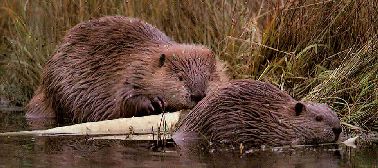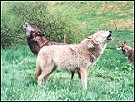Introduction History Legal Obligations Benefits Wolf Case Study
PROBLEMS OF REINTRODUCTION
![]()
Costs
![]() Planning and monitoring
Planning and monitoring
![]() Captive breeding expenses
Captive breeding expenses
![]() Difficult to value reintroduction benefits
Difficult to value reintroduction benefits
Techniques for capture, breeding and training/release
![]() Permission of different groups
Permission of different groups
![]() Capturing and transporting animals- stress, injury, fatalities
Capturing and transporting animals- stress, injury, fatalities
![]() Expertise and equipment
Expertise and equipment
![]() Intact social groups
Intact social groups
![]() Difficulties of breeding
Difficulties of breeding
![]() Predator prey interactions
Predator prey interactions
Disease
![]() Small groups susceptible to disease
Small groups susceptible to disease
![]() Exposure to diseases in captivity
Exposure to diseases in captivity
![]() Endemic diseases- lack of immunity
Endemic diseases- lack of immunity
Site availability and suitability- space, predation and competition

![]() Not large area in the UK
Not large area in the UK
![]() Proximity to populated areas
Proximity to populated areas
![]() Available food and habitat
Available food and habitat
![]() Population density needed to produce viable populations
Population density needed to produce viable populations
![]() Agreement of agencies involved e.g. Scottish Natural Heritage
Agreement of agencies involved e.g. Scottish Natural Heritage
![]() Predation
Predation
![]() Food chain disruption- changes in environmental setting since removal
Food chain disruption- changes in environmental setting since removal
Genetic diversity and composition
![]() Disease resistance
Disease resistance
![]() Creation of bottle necks in the gene pool ( Foose, 1991)
Creation of bottle necks in the gene pool ( Foose, 1991)
Public

![]() Feeling threatened- e.g. wolves (Glasgow Zoo, 2002)
Feeling threatened- e.g. wolves (Glasgow Zoo, 2002)
![]() Differences in perception of species reintroduction by urban and rural dwellers
Differences in perception of species reintroduction by urban and rural dwellers
![]() Wolves
Wolves
![]() Beavers
Beavers
![]()
![]()